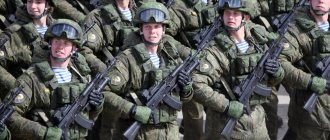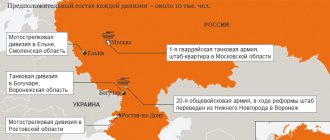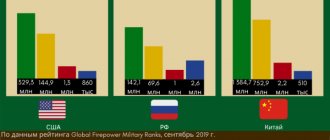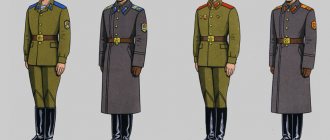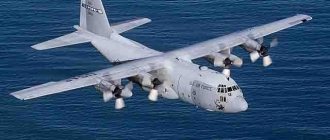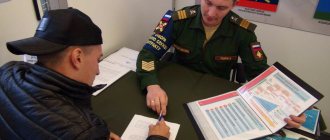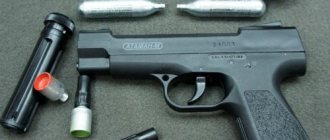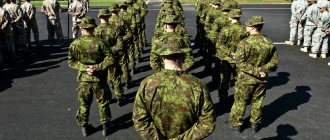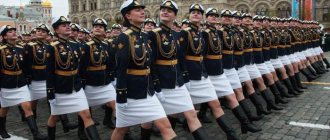A little over a year ago, Russian Defense Minister S.K. Shoigu at a meeting of the Board of the Ministry of Defense announced figures that are important for all Russians. Over the past 3 years, the number of NATO troops near the borders of Russia, in the Baltic states, Poland, Romania and Bulgaria has increased from 2 to 15 thousand.
In 2022, heavy American armored vehicles settled 15 km from the border of Belarus, Russia’s closest ally. The existing arms control system in the world is being destroyed. The United States has officially withdrawn from a treaty limiting the deployment of intermediate- and shorter-range missiles.
Today, the hand of the Doomsday Clock is in a position closer than ever to the point of the beginning of a global nuclear cataclysm. The solution of political and economic problems by strong countries through military means has become the norm. Without regard to the norms of international law and the interests of small nations.
Pace of change
Increasingly, diplomacy is being replaced by bombers and expeditionary forces. Napoleon’s phrase has not lost its relevance: “A people who do not want to feed their own army will feed someone else’s.” The Russian army needs to be strengthened.
In 2022, 1.9 trillion rubles will be allocated for the needs of the Ministry of Defense of the Russian Federation. This figure does not include secret information regarding the volume of state defense orders and the budget of structures working for the defense of Russia. The volume of financing exceeds the figures for 2019 by 6.6%.
The pace of rearmament of the armed forces with modern weapons and equipment will continue. In 2022, their share in the equipment structure will be at least 70%.
The fleet will include 14 ships and 3 submarines. Aviation will be strengthened with 106 new or modernized aircraft. The ground forces will receive 565 armored vehicles, 436 units of missile and artillery weapons, and 2 Buk-M3 divisional systems.
Features of the rearmament of the Russian army over the past 7 years
Russian Armed Forces. Results of 2022
In just a few days, 2022 will become history, giving way to the new year 2018. Among other things, the outgoing year will occupy a certain place in the history of the Russian armed forces. In recent months, our army has continued to develop in one way or another, and also solved various problems, both on Russian territory and beyond its borders. The year is coming to an end, and therefore it is time to sum up its results.
In the outgoing year 2022, the armed forces, with the assistance of various civilian structures, industry, etc. continued to solve several basic problems. First of all, the modernization of the army continued, providing for the renewal of the fleet of equipment and weapons, as well as the optimization of existing structures. Also, various units and formations were regularly involved in various combat readiness checks; Several major exercises were conducted. Finally, in 2022, the Russian army continued to help Syria in the fight against terrorism. With certain reservations, all of this year's goals were achieved.
Syrian operation
For obvious reasons, the results of the combat work of the Russian armed forces within the framework of the Syrian operation are of greatest interest. Since the fall of 2015, the Russian Aerospace Forces and a number of other branches of the military have been fighting terrorist organizations in Syria, and to date, according to official statements, they have achieved all the desired results - the largest bandit formations have actually been defeated and no longer pose the same threat.
Last Friday, December 22, in the new complex of the Military Academy of Strategic Missile Forces named after. Peter the Great (Balashikha) a meeting of the Expanded Board of the Ministry of Defense was held, during which the results of the outgoing year were summed up. Detailed information about the Syrian operation was announced by Defense Minister Army General Sergei Shoigu.
More than 48 thousand Russian troops took part in the Syrian operation. More than 14 thousand were awarded state awards. The Aerospace Forces, Navy, Special Operations Forces, etc. were involved in combat work. New weapons of various classes and types have been battle tested. Based on the results of such operation, the developers received recommendations regarding further refinement of the samples. The final result of the work of the Russian army in Syria was the liberation of 1,024 settlements, including a number of large cities, as well as the return home of 1.3 million refugees.
As S. Shoigu pointed out, during the operation in Syria, VKS aircraft carried out about 34 thousand combat missions. In particular, strategic bombers took part in 66 strikes. 90% of front-line aviation pilots and 80% of long-range aviation flight personnel completed from 100 to 120 sorties. Navy ships and submarines carried out hundreds of missile strikes against remote terrorist targets. The carrier-based aircraft of the ship "Admiral Kuznetsov" played a significant role, performing 420 combat missions. Modern air defense systems were tested in a combat situation. For example, the Pantsir complexes were able to destroy 16 unmanned aerial vehicles and 53 missiles fired by the enemy.
The Syrian operation has become a testing ground for testing old and new weapons and equipment. In total, 215 products passed such combat tests. Based on the results of actual operation, about 700 deficiencies were identified; almost all of them have been eliminated by now.
As part of the operation, Russian armed forces destroyed over 60.3 thousand terrorists, including more than 800 leaders. About 8 thousand armored vehicles and improvised military equipment were destroyed, more than 700 workshops for the production of weapons and equipment were liquidated. The destruction of almost 400 oil production and refining facilities, as well as 4,100 tank trucks, has seriously affected the income of the armed groups.
The Reconciliation Center played a major role in the operation, with the assistance of which more than 2,300 settlements with a population of about 10.5 million people emerged from the war. Almost 1,700 times the Center organized the distribution of humanitarian aid, which was supplied to 700 thousand civilians.
At the moment, the reduced Russian group in Syria continues to be on duty, and also carries out mine clearance in the liberated territories, trains local specialists and otherwise helps the friendly country.
Exercises
While some units and formations were working in Syria, others were improving their skills at their bases and at Russian training grounds. According to the Ministry of Defense, 15 thousand various training events were conducted in 2022 - an increase of 20% compared to the previous year. The number of bilateral exercises has been doubled. The intensity of interspecific training is 16%. Russia has military cooperation with 90 countries, of which 35 participated in joint exercises.
A large number of own and joint exercises were conducted. The Minister of Defense called the Zapad-2017 exercise, held jointly with the armed forces of the Republic of Belarus, the most significant such event of the outgoing year. International maneuvers “Combat Brotherhood”, “Maritime Cooperation”, “Indra” were also held.
The International Army Games occupy a special place in the field of international cooperation. Several years ago, Russia only held tank biathlon competitions, but by now several “disciplines” have appeared within the framework of full-fledged games. This year, 28 countries took part in the Army Games, and the training grounds of five countries became the competition grounds. To conduct such events in Russia, 149 training grounds were modernized.
Rearmament
The current results of the ongoing rearmament were announced. At the moment, as of the end of 2022, the share of new weapons and equipment in the troops is at 60%. Over the next few years - by 2022 - this parameter should reach 70%. For comparison, five years ago, in 2012, the share of new products was only 16%.
In 2022, the rearmament of three missile regiments from the Strategic Missile Forces was completed. These units received complete sets of Yars missile systems in a mobile ground version. The aviation component of the strategic nuclear forces was replenished with three modernized aircraft. The development of the naval component continues as part of the construction of new submarines. However, this year the Navy did not receive new strategic missile carriers.
In the past year, the Ground Forces received 2,055 units of new and modernized weapons and equipment. With the help of such supplies, it was possible to rearm 3 formations and 11 units. The arsenals and fleet of airborne troops received 184 armored combat vehicles of various classes, including a number of self-propelled guns.
The Aerospace Forces were replenished with a new military transport division and a special purpose division. A number of units and air bases received 191 modern aircraft and helicopters. Also, 143 units of air defense and missile defense systems were built and transferred to the Aerospace Forces. A few weeks ago, the Unified Space System was put on experimental combat duty.
The Navy began operating a dozen new ships and boats, as well as 13 auxiliary vessels. Naval aviation has been strengthened with 15 new aircraft. Four complexes, “Bal” and “Bastion,” were supplied to the coastal troops.
The saturation of troops with unmanned aircraft systems for reconnaissance purposes continues. This year, the army received 59 similar complexes of a number of models, which include a total of 199 aircraft.
Military construction
In parallel with the production of new equipment, the infrastructure necessary for its maintenance and service is being built. This year, almost 3,300 buildings and structures for various purposes with a total area of 3.2 million sq.m. were built for this purpose. Compared to last year, an increase of 6% was achieved.
Construction of 25 new production and logistics complexes is underway. The first of them, Nara, was put into operation this year. With its help, it will be possible to reduce 29 storage facilities and optimize the costs of maintaining the material part.
Personnel training
This year, the Ministry of Defense opened a new Presidential Cadet School in Petrozavodsk. As Defense Minister S. Shoigu noted, this event puts an end to the program of forming a network of similar educational institutions in all federal districts, which started on the instructions of the president. A new branch of the Nakhimov Naval School (St. Petersburg) was opened in Murmansk.
Next year, the Ministry of Defense plans to commission a pair of new educational buildings at the Nakhimov School in St. Petersburg. A physics and mathematics school for gifted children will open at the Academy of Strategic Missile Forces (Balashikha).
Health
At the Military Medical Academy named after. CM. Kirov, a new multidisciplinary clinic was opened. This institution provides a full range of medical care that meets international standards. Over the course of the year, 35 thousand people received treatment at the clinic’s inpatient facility. 19,800 operations were performed, including 16 thousand complex ones involving the use of high technology.
The Multidisciplinary Clinic has telemedicine facilities. Thus, as part of the treatment of military personnel stationed in the Arctic, over 100 planned and emergency telemedicine consultations were conducted during the year.
In general, the army has achieved good results in the field of healthcare. The overall incidence rate of personnel this year decreased by 7%.
Future plans
Completing one year, the military department makes plans for the next. First of all, they are related to the purchase of new weapons and equipment for all types of armed forces and branches of the military. By the end of next year, the share of new products in the army as a whole should reach 61%. This figure in the Strategic Missile Forces will be 82%, in the ground forces - 46%, in the Aerospace Forces - 74%, in the Navy - 55%.
The development of strategic nuclear forces will continue with the putting on duty of 11 launchers with Yars missiles. Long-range aviation will receive six modernized aircraft. The fleet will include the lead missile cruiser of Project 995A, armed with Bulava missiles.
Next year, the ground forces will receive more than 3,500 units of new weapons and equipment. The Aerospace Forces and Naval Aviation will receive more than two hundred new and modernized aircraft of various classes. It is also planned to supply ten divisional sets of S-400 Triumph anti-aircraft missile systems and four sets of the Pantsir system. The Aerospace Forces will have to continue the trial operation of the Unified Space System. The Navy will receive 35 ships, boats, submarines and vessels.
In the interests of aviation and other branches of the military, in 2022 it is planned to complete the reconstruction and modernization of 11 airfields in different regions. About 3 thousand various buildings and structures in different parts will be put into operation. Also next year, the process of creating the Military Innovation Technopolis “ERA” will begin.
Community Relations
Renewal and modernization of the armed forces, as well as patriotic education and real successes in military operations lead to the desired results in the sphere of public relations. Over the past five years, there has been a constant increase in approval of the armed forces by citizens of the country.
According to the latest data, over five years the number of negative assessments of the army’s performance has decreased several times – from 31% to 7%. At the same time, 93% of respondents trust the army. 64% of citizens consider military service to be an important and good school of life for young people.
Not long ago, with the participation of the Ministry of Defense, the youth movement “Yunarmiya” was founded. To date, this organization consists of 188 thousand people from all regions of the country. Thus, “Youth Army” turns out to be one of the largest and most widespread youth organizations in Russia. Recently, about 16 thousand Yunarmiya participants visited sports and patriotic camps. Such positive experience will be used in the future and expanded to other regions.
***
As follows from official data announced during a recent extended meeting of the Board of the Ministry of Defense, in general, everything is going according to established plans and the main tasks for the outgoing year have been successfully completed. The state defense order was fulfilled almost completely, the army mastered new types of equipment and weapons, and also used them in the fight against international terrorism.
Naturally, as always happens in all areas, not all plans were fully implemented, and therefore some of the work will have to be completed next year, 2022. However, the accumulated experience and existing potential allow us to look into the future with optimism and have no doubt that the plans will still be fully implemented and the appearance of the armed forces will meet the requirements.
As in the recent past, the Ministry of Defense and the Army are seeing off the outgoing year with good results and an updated list of achievements. In just a few days, the new year 2022 will arrive, and the armed forces, with the assistance of industry and the state, will once again have to solve new problems of one kind or another. The process of army development will not stop and will soon yield new results. In the meantime, the armed forces can pay attention to festive events.
Based on materials from the sites: https://kremlin.ru/ https://function.mil.ru/ https://rg.ru/ https://ria.ru/
Main strength
The main strength in any army continues to be not the hardware, but the fighting spirit of the soldier. The President of the Russian Federation said that weapons, even the most modern ones, will sooner or later appear in other armies of the world. But there are no such people as in Russia anywhere. So how many military personnel are there in Russia at the moment?
In accordance with paragraph 11 of Art. 4 of Federal Law No. 61-FZ “On Defense” of May 31, 1996, the decision on the number of military and civilian personnel in the Russian army is made by the Supreme Commander-in-Chief of the RF Armed Forces - the President of the country.
In November 2022, by Decree of the Head of State No. 555, the staffing level of the Armed Forces of the Russian Federation was established at 1,902,758 people. Of these, 1,013,628 are people in uniform.
Navy troops
Russian warship
The Russian Navy was founded in 1696 by a resolution of the Boyar Duma. The main role in this was played by Peter 1, who sought to turn Russia into a maritime power. October 30 is considered the founding day of the Navy. This holiday is celebrated annually.
The main task of the modern navy is to conduct various combat operations on the seas and oceans. In addition, the navy is capable of solving the following tasks:
- Deliver strikes on various enemy targets, and the strikes can be both conventional and nuclear;
- Engage in amphibious landings;
- Carry out naval blockades of enemy ports;
- Protect Russia's economic interests.
In addition, the navy can conduct various search and rescue operations.
The Russian Navy has a huge arsenal of modern weapons that can be used not only to strike close targets, but also capable of striking targets located hundreds of kilometers away from the fleet.
Like other types of troops, the Navy is capable of responding in the shortest possible time to changes in the military situation in the country and in a short time going into a state of full combat readiness to launch strikes.
In 2022, the Russian Navy purchased several new ships; in 2020, according to the naval modernization program, several more new ships will be put into operation. In total, by 2020 it is planned to purchase 40 new minesweepers.
In addition to surface forces, the navy includes:
- Submarine Force;
- All naval aviation;
- Coastal troops;
- Special forces (marines).
The Russian submarine fleet is one of the most modern forces of its kind in the world. He is capable of carrying out covert strikes against the enemy. In addition, missile submarines carry ballistic nuclear missiles on board. Since the location of nuclear missile carriers is strictly classified, they are a powerful deterrent for a possible aggressor. In the event of the outbreak of hostilities, the submarine fleet is capable of delivering sudden nuclear strikes of enormous force.
Rocket launch
Who's in line?
How many serve in the army in Russia?
The burden of defending the Fatherland lies on the shoulders of professional military personnel and conscripts. The share of the latter in the army structure is steadily declining.
Replacement occurs at the expense of persons who have expressed a desire to serve on a contract basis. Already in 2015, the number of military personnel who entered into a contract with the Ministry of Defense (300 thousand) exceeded the number of conscripts (276 thousand)
The gap between the two main categories continues to widen. The most active decline is in the proportion of military personnel serving conscripted service in the navy, special forces units, marine corps, airborne forces, strategic missile forces, and air force. It is increasingly difficult for young people without special training to get into units classified as “elite”
In 2022, over 50 thousand Russian citizens joined the ranks of defenders of the Fatherland under a contract with the Moscow Region.
How many recruits go into the army?
Over the past decade, there has been a trend towards a reduction in the number of people joining the army by conscription. In the spring of 2019, according to Presidential Decree No. 135 of March 30, 2019, 135 thousand recruits became active. In the fall, according to Decree of the President of the Russian Federation No. 472 dated September 30, 2019, 132 thousand Russian citizens were called up for service.
Over the past decade, the number of conscripts into the Russian army has changed as follows:
| Year | 2010 | 2011 | 2012 | 2013 | 2014 | 2015 | 2016 | 2017 | 2018 |
| Spring | 270600 | 218720 | 155570 | 153200 | 154000 | 150145 | 155000 | 142000 | 128000 |
| Autumn | 278821 | 135850 | 140140 | 150000 | 154100 | 147100 | 152000 | 134000 | 132500 |
Compared to 2012, the number of people trying to evade military service has decreased by more than three times. There are no plans for any changes to the duration of military service. Talk that the service life will increase to one and a half or two years has no basis. The President of Russia announced this on June 15, 2017 during a direct line with Russians.
Mobilization reserve of Russia
There are no plans to completely abandon conscripts from military service. The military power of a state consists not only of fighters wearing shoulder straps. The mobilization potential of the country is no less important.
As sad as it may be, in the event of war, those who are in the ranks at the time of the start of active operations will be the first to be knocked out. They should be replaced by trained citizens who have completed military service school.
The need for mobilization resources of the Russian Federation by 2022 will be 450 thousand officers and 2.8 million soldiers and sergeants
Rocket Forces and Airborne Troops
The Strategic Missile Forces are the pride of the Russian army. It is in these troops that most of the country's nuclear potential is concentrated. The Strategic Missile Forces guarantee that any nuclear strike from a possible rival will not go unanswered. The main weapons of this type of troops are intercontinental nuclear missiles, capable of wiping out an entire country from the face of the earth.
Airborne troops are the dream of many young men who were called to the military registration and enlistment office for urgent conscription. Few people manage to fulfill their dream, since serving in the Airborne Forces requires ideal health and psychological stability. These criteria were created for a reason, because paratroopers have to operate behind enemy lines, without relying on support from other types of troops.
Russian Army Poster
The Airborne Forces include not only airborne divisions, but also air assault divisions. Since the combat missions of paratroopers are extremely difficult, their training and training are particularly difficult.
Leaders in the preparation of army replenishment
Among the regions of Russia there is a certain competition in organizing the training of young people for military service and active interaction with the Armed Forces. According to the head of the Main Organizational and Mobilization Directorate of the Russian General Staff, Burdinsky E.V. in the lead:
- Republic of Tatarstan;
- Stavropol region;
- Tyva Republic;
- Republic of Crimea;
- Omsk region;
- Belgorod region;
- Voronezh region.
Division into territorial districts
As a result of military reform, military districts were formed on the territory of the Russian Federation:
- The Western District includes regions located near Moscow and St. Petersburg, where the headquarters of military units are located.
- Southern - covers the republics of the North Caucasus, Crimea. The commander-in-chief and headquarters are located in Rostov-on-Don.
- The largest part, 40% of the territory of Russia, belongs to the Central Military District. The units are led by a commander from headquarters in Yekaterinburg.
- The Eastern District covers part of Siberia and the Far East with 2 republics, 4 territories, 3 regions, Jewish Autonomy, Chukotka Autonomous District. The headquarters is located in Khabarovsk.
- The headquarters of the Northern Fleet, which is an independent military unit, is located in Severomorsk.
All districts are subordinate to the Commander-in-Chief of the Armed Forces - the President of the Russian Federation, V.V. Putin.
